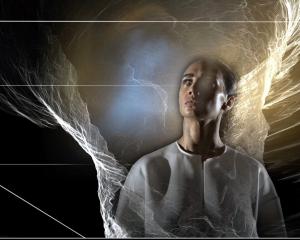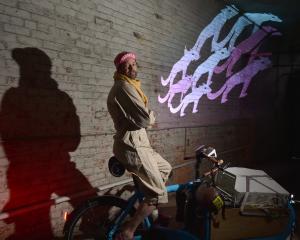
''Cinque Artiste'' (The Artist's Room)
The Artist's Room has followed up its group show ''Seven'' with a further selection of five artists' work.
These pieces are predominantly landscapes and nature studies, and the artists' distinct styles counterpoint each other very nicely.
Sheryl McCammon and Catherine Garrett both provide overviews of rural and semirural Otago.
Garrett presents highly stylised vistas, the land's sweeps and curves represented in bold blocks and sharp delineations reminiscent of fine stained-glass or ceramics.
With McCammon, fine detail and texture catch the eye, in the peeling paint and rusted metal of the artist's studies of buildings and vehicles.
Pia Davies presents four effective large-scale urban and beach scenes, introducing a vibrant and colourful St Clair with more than a slight influence of Annie Baird and Lindsay Crooks.
Nature studies are the realm in which the two remaining artists, Karen Baddock and Anna Priluka, make their mark.
Priluka presents highly composed images of animal and plant life inspired by Victorian botanical studies, and the results are very attractive.
Also highly impressive are Baddock's images of bird life, which here include paired paintings and graphite drawings of the same subjects.
These show the technical skill with which she captures the life of birds such as owls and falcons.

''New Light'', Rob Piggott (Vortex Gallery)
The former Forno's Auction House at the corner of Bond and Police Sts has a long association with the Dunedin art scene.
Its latest artistic incarnation, as Vortex Gallery, opened for its debut exhibition earlier this month with ''New Light'', a series of older works by Rob Piggott.
Piggott's impressionistic abstracts are predominantly watercolour, with some acrylics and woodcuts.
They are largely informed by the light and colour of the land.
Piggott relies on a semigeometric structure to interpret both landscapes (mainly of the richly baked landforms of Central Otago) and abstract concepts such as ''Within'' and ''Reassurance''.
Several of the paintings in the exhibition rely on Piggott's trademark style of overlaying a grid-like pattern of black lines on washes of pastel blues, reds, and greys, often on canvas which has been left in its natural tone.
Other pieces abandon the grid, focusing entirely on mottled blocks of colour.
Perhaps the most impressive items in the exhibition, however, are the two large ''Resolution'' works, each presented as a tight lattice of deeply hued lines over a background split into halves of white and sandy gold.
These paintings work well imbuing the viewer with a sense of contemplative calm.

''Coastal and Country'', Robert Ireland (Gallery De Novo)
Robert Ireland's works are also inspired by the landscape and heavily indebted to its colour and tone, but that is where similarity to Piggott's art ends.
Ireland's paintings are confident impressionistic oils, conveying the spirit and atmosphere of the countryside in thick, honey-like shades.
There is something sumptuous about the effects of the light in Ireland's works, but there is also a deceptiveness in his technique.
Buildings and structures appear almost hastily sketched, the gesso of the canvas almost visible through the brickwork of Garden Path and stones of Sunlit Pool.
The colours of nature, however, are presented with strong, gestural strokes, building up into solid banks of colour.
The juxtaposition of contrasting and complementary hues is, in works such as Beach scene, the most important factor of the composition.
In other pieces, shapes and forms emerge out of a calm background through the placement of wilful, almost frenzied, brushwork.
The overall effect in many cases is to create a sense of the presence of the land, of its air and its colour, rather than a direct photo-real representation.
In this, the artist is entirely successful, whether his aim is to create the cool depths of a bush stream's pools or the looming stormclouds above a deserted beach.












